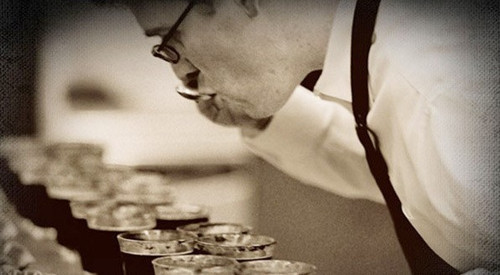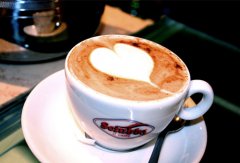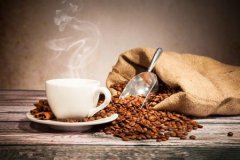The source of coffee and the method of making and blending coffee.
Coffee is the transliteration of English Coffee. It is a drink made from roasted coffee beans, ground into powder and then brewed.

(1) introduction to coffee
1. The origin of coffee
Coffee originated in Ethiopia in Africa, and there are many stories about its discovery, among which a legend accepted by most people is that about 3000 years ago, a shepherd saw a sheep grazing sheep eating the fruit of an unknown shrub. Excited, excited, running and jumping, so the shepherd also tasted the fruit, and the result was equally refreshed. Because of the local belief in Islam and the prohibition of alcohol, people used coffee instead of alcohol and quickly spread.
2. The origin of coffee
At present, coffee production in the world is mainly concentrated in the following countries and regions: Brazil, Indonesia, Colombia, Jamaica, Ecuador, New Guinea and other countries, of which Brazil is the most famous. Coffee was introduced into Taiwan in the second half of the 19th century, and then introduced into Hainan. Now it is grown in Yunnan, Guangdong, Guangxi, Fujian and other places in China. In particular, the quality of small-ingredient coffee in Yunnan is better, which is comparable to the world-famous coffee.
3. The composition of coffee
Coffee contains caffeine and volatile aromatic oils. although raw coffee and roasted coffee beans are different in composition, they both contain 5% of protein, 10% of fat, 14% of fat, 1.2% of caffeine and 1.8% of inorganic salts, carbohydrates, moisture, cellulose, multivitamins, fats, sugars and aromatic oils.
4. The efficacy of coffee
Coffee drinks are made from coffee bean extract. Coffee has high nutritional value, moderate drinking can help digestion, invigorate the spirit, quench thirst and prevent heat, eliminate fatigue and other functions, widely loved by people, especially European and American people regard it as an indispensable part of daily life.
(2) the production of coffee
1. Roasting of coffee
Roasting is an important process of making coffee. Roasting is to stir-fry the coffee beans, but the time should not be too long. There are three kinds of roasting: light roasting, cinnamon roasting and thick roasting. Roasted coffee beans make the aromatic oil dissolve in water and give off a fragrance, but some of the fragrance evaporates away. At present, it is more popular to roast coffee beans quickly with charcoal fire, which can make the aroma of coffee basically non-volatile.
2. Crushing and mixing of coffee
The roasted coffee beans are fragrant and fragrant. Ideally, the coffee beans are ground before each drink, so the flavor is better. Generally speaking, coffee with fine grains after grinding has a strong flavor, while coffee with coarse particles after grinding is fragrant. In order to make the coffee strong and fragrant, the fine coffee powder can be mixed and mixed to drink.
3. The blending of coffee
In restaurants or coffee shops, there are two common coffee blending methods: distillation and electric coffee pot.
(1) Distillation method
The coffee brewed by distillation not only retains the original delicious flavor of the coffee, but also can be seen clearly from the transparent glass pot. When making coffee, put the coffee powder in the upper pot and the water in the lower pot, heat the kettle with alcohol lamp or gas, wait for the water to boil, raise all the water in the lower pot to the upper pot, turn down the fire, gently stir the coffee powder, and then remove the fire. When the coffee in the upper pot gradually flows into the next pot, it can be poured into the cup to drink.
(2) the method of flushing and adjusting the electric coffee pot
Put the coffee beans in the blender to grind, then add ice water to the water tank in the electric coffee pot, close the lid and turn on the electricity, that is, start the process of automatic flushing, filtering and dripping into the pot below.
(3) other factors affecting coffee making
1. Water quality: like making tea, coffee must pay attention to water quality. Water containing large amounts of iron and alkaline hard water should not be used. The most ideal water should be distilled water. In addition, there are certain requirements for water temperature, the water temperature should be between 80 ℃-90 ℃, do not use boiling water, otherwise it will increase the bitterness of coffee and reduce the quality of coffee.
2. Soaking time
As coffee contains caffeine and aromatic oil, soaking time should not be too long, usually soaking for about 2 minutes, too long soaking not only destroys the flavor of coffee, but also causes floating matter on the coffee liquid and makes the coffee turbid.
3. utensils
It is most appropriate to use glassware and ceramic utensils to make coffee. If metal utensils are used, it will oxidize, giving the coffee an unpleasant taste.
4. Dosage
The amount of coffee should be determined according to the size of the coffee particles and the preference of the coffee drinker. Usually fine powdered coffee is less than fine granular coffee, while coarse granular coffee is about 15% more than fine granular coffee. If you brew 40-50 cups of coffee with 500 grams of coffee, it is espresso.
(4) matters needing attention in coffee service
1. Choose high-quality coffee and do not store it in large quantities, otherwise it will affect the quality and flavor of the coffee.
2. The corresponding coffee brewing time is determined according to the thickness of coffee particles.
3. Choose high-quality water, and the ratio of water to coffee should be appropriate. Usually put 100 grams of water for every 10 grams of coffee.
4. Coffee had better be boiled and drunk, otherwise it will affect the taste of coffee and make it lose its aroma.
5. Carefully clean the equipment for making coffee, otherwise it will produce a bad smell.
6. The quality of cream will also affect the quality of coffee. The better the cream, the more it can blend with the aroma of coffee.
Important Notice :
前街咖啡 FrontStreet Coffee has moved to new addredd:
FrontStreet Coffee Address: 315,Donghua East Road,GuangZhou
Tel:020 38364473
- Prev

The way to extract the essence of coffee the cooking of coffee is classified into five categories
According to the contact mode of water and coffee powder, coffee cooking can be classified into five categories: steaming, pressurization, gravity, leaching and ice brewing. The easiest way to cook is to put the coffee powder in the cup and add hot water. As it cools, the coffee powder will sink to the bottom of the cup. This is an old method, and it is still used in some parts of Indonesia. Be careful not to get to the bottom of the cup
- Next

Espresso Milk is one of the most widely used coffee condiments
Milk is one of the most widely used coffee condiments. Traditionally, milk has never been added to coffee in some countries such as Yemen, Ethiopia and Turkey. It is generally believed that milk was first added to coffee by Sieur Monin in Grenoble in 1685. In the mid-1980s, 57% of Americans drank coffee with milk.
Related
- Beginners will see the "Coffee pull flower" guide!
- What is the difference between ice blog purified milk and ordinary milk coffee?
- Why is the Philippines the largest producer of crops in Liberia?
- For coffee extraction, should the fine powder be retained?
- How does extracted espresso fill pressed powder? How much strength does it take to press the powder?
- How to make jasmine cold extract coffee? Is the jasmine + latte good?
- Will this little toy really make the coffee taste better? How does Lily Drip affect coffee extraction?
- Will the action of slapping the filter cup also affect coffee extraction?
- What's the difference between powder-to-water ratio and powder-to-liquid ratio?
- What is the Ethiopian local species? What does it have to do with Heirloom native species?

